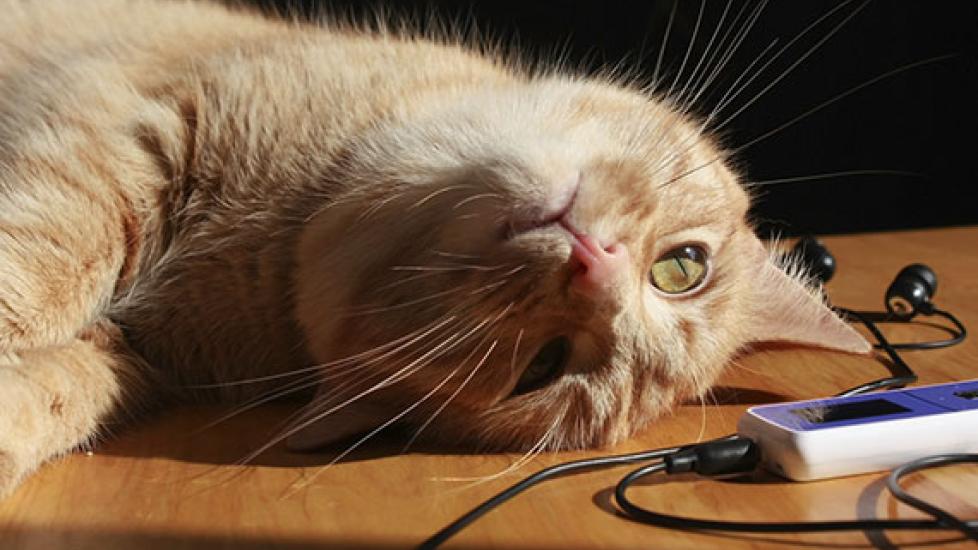Music Therapy: What's Good for the Dog is Good for the Cat, Too
As I circled the mall parking lot this past week in search of a spot that never materialized, I felt my blood pressure beginning to rise. By the time a person on the wrong side of the road made an illegal u-turn to grab the spot I was about to pull into, I was full throttle volcano mode. Happy Holidays indeed.
Instead of jumping out of the car screaming and waving my arms like I wanted to, I took a deep breath and put on some holiday tunes. It took a couple of minutes to kick in, but soon enough Bing Crosby got me in a calmer mood and I left the mall parking lot behind to find what I needed online, at home in my pajamas with a glass of wine. Thank you, Bing.
The power of music to affect our emotional state has long been valued in human cultures across history, but only recently have we attempted to differentiate whether or not animals have similar responses to music. Unsurprisingly, the answer is yes though their preferences may not be quite the same as ours.
I first met harpist Susan Raimond from Pet Pause at an animal hospice care conference a year ago. After listening to her describe the research that went into her music therapy for animals from wolves to primates to domestic animals, I took home a collection of her CDs to use with my end-of-life care patients. I play it softly in the background during incredibly stressful euthanasia appointments, and I find it hard to describe how well it works at calming everyone in the room, both human and animal. It’s as if it absorbs the stress and floats it away.
After witnessing firsthand the effect of music on animals, I started to delve more into the word of music therapy for pets. Concert pianist Lisa Spector and psychoacoustics researcher Joshua Leeds collaborated on a series called Through a Dog’s Ear, which plays in shelters across the country as well as in the homes of many a person with an anxious pet. I had the pleasure of hearing them co-present their work at an event last year, when they illustrated how dogs prefer classical music played one octave lower and slower than what we are familiar with. This, too, has been added to my repertoire.
While many people are interested in the effects of music on dogs, less has been studied about its effects on cats. Perhaps this is because they seem disinterested in music and sound, but it may also have something to do with their own peculiar preferences. Unlike humans, who develop innate preferences for rhythms mimicking the sound of a mother’s heartbeat, cats seem to prefer sounds and rhythms they experience after they are born: a rumbling purr, or the staccato chirps of a bird. Cellist David Teie just successfully raised over $200,000 for a Kickstarter Music for Cats project based on this research, showing that people’s desire to enrich their cats’ lives is vastly underrated.
As we speed towards the bustling holiday season, don’t forget that pets can stress out too. We are out at more events than usual, or hosting them ourselves. The increased activity, flood of new people, and changes in environment and routine can cause even the most even-keeled pet to feel on edge.
I am a fan of doing all we can to minimize stress in pets, up to and including medications when needed, but it’s astonishing to me how such a safe, effective, and non-invasive form of stress control isn’t more commonly used by pet owners and professionals alike. It’s good stuff, I promise.
If you have an easily stressed-out pet, I highly encourage you to try out some of the artists I mentioned above. And who knows? It just might mellow you out as well.

Dr Jessica Vogelsang
